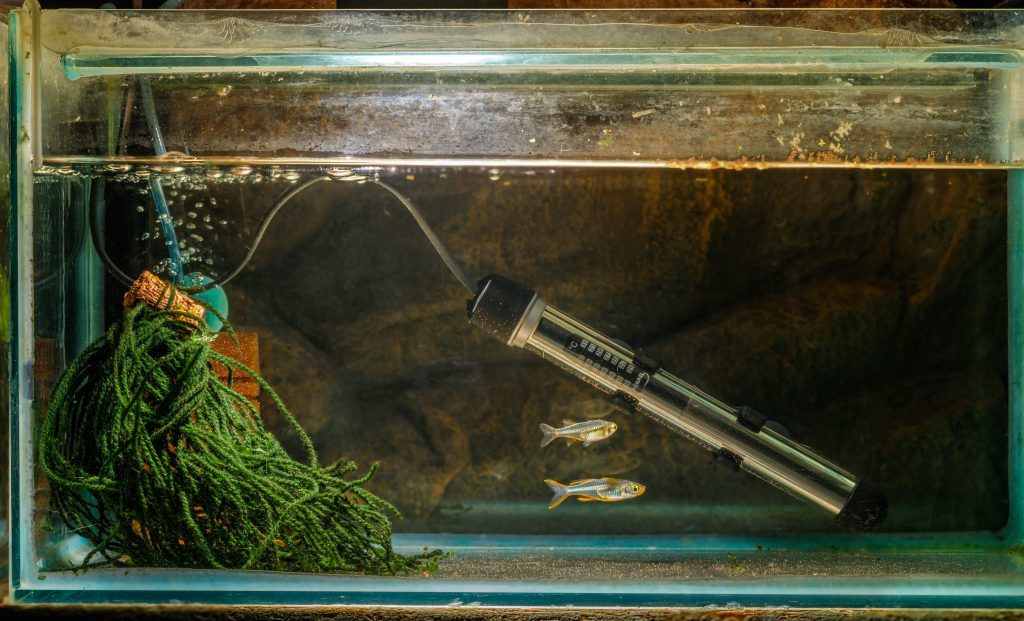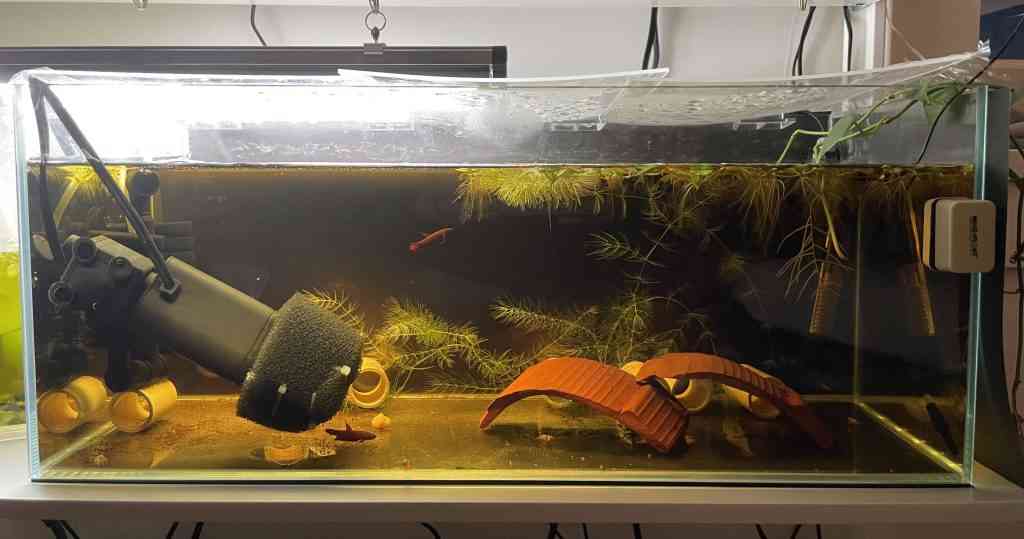Anyone who has kept fish for any length of time is probably guilty of failing to quarantine new arrivals, and they have probably paid the price for it. I can think of several times that I purchased a new fish and put it directly into one of my established aquariums. When the fish in the aquarium started breaking out with Ich or Ichthyobodo or some other infectious disease shortly after, I knew I only had myself to blame and swore that I would never skip quarantining a new fish again. Quarantining requires planning, effort, extra supplies, space, and patience, so it’s an easy step to want to skip.
A quarantine aquarium can also function as a hospital tank for separating and treating sick fish from your main aquarium when needed. Here are the basics of how to set up a quarantine/hospital tank, so you can protect your fish when bringing in new arrivals and effectively manage fish disease in your established aquarium(s).
The Quarantine Setup

Aquarium (+/- lid)
Most casual fishkeepers probably do not need anything larger than a 10 gallon quarantine tank for new arrivals. While a 20 gallon quarantine tank is the most versatile, if you generally keep small species, a 5 gallon quarantine tank can be adequate.
Since you are only keeping your new fish in this setup temporarily, you can usually use an aquarium smaller than the recommended tank size for your fish. If possible, use an aquarium with a bare bottom and as little decor as possible (recognizing that some species will need hiding places). This reduces places for pathogens to grow and hide and makes it easy to clean and maintain. When selecting decor, choose objects that can be cleaned easily, such as PCV pipe, terracotta pot pieces, or plastic plants.
Quarantine or hospital tanks do not need expensive lighting or canopies. However, a basic lid is ideal to prevent fish from jumping out. Clear plastic, extra pieces of glass or mesh can be used as temporary covers. Cling wrap can also be used to cover exposed areas if the fish you have are jumpers.
Filtration
Air-driven sponge filters are the easiest and cheapest type of filter for a quarantine set up. If you have planned in advance for your new arrival, you can pre-seed the sponge filter with nitrifying bacteria by leaving it in your established aquarium for a few weeks. If your new arrival was unplanned, you can still use the sponge filter, but you will need to do frequent water changes to maintain the water quality.
Heater
It is important to quarantine your new arrivals at the temperature they will be kept at in your established tank, because some diseases only show up at certain temperatures. If you quarantine at a different temperature than the temperature they will be kept at, you might miss something.
The Quarantine
One month should be a sufficient time to quarantine new arrivals for home aquaria. During quarantine:
Observation
Observe fish closely for signs of disease (lethargy, lack of appetite, flashing, white spots on the skin). Treatments are not needed unless fish show signs of disease. Unnecessary treatments are hard on fish and can worsen their health.
Hygiene & Water Quality
Maintain excellent hygiene and water quality. Perform regular, large volume water changes. Siphon out uneaten food and waste frequently. Consider using a UV unit to remove pathogens from the water.
Patience
If fish remain healthy for the month of quarantine, they can be moved into your main aquarium. If fish are ill or there are deaths, do not move fish out of quarantine until the problem has been resolved.
After Quarantine
When your quarantine is done, you can empty the quarantine tank and store it until the next time you go to your fish store and get new fish. Keeping a spare aquarium can be beneficial in case of sick fish, equipment failures in your main tank, unexpected spawns, or disagreements between tankmates. Quarantine doesn’t have to be complicated. A simple setup can go a long way to protecting the health of your fish.

